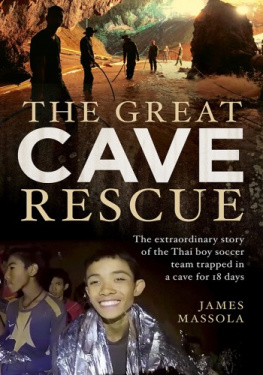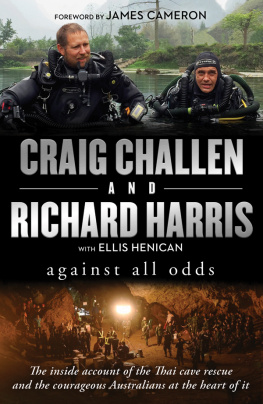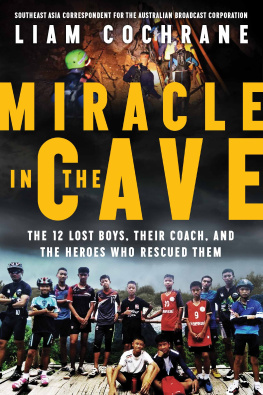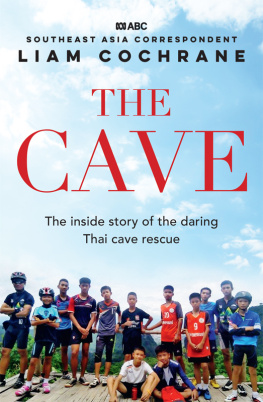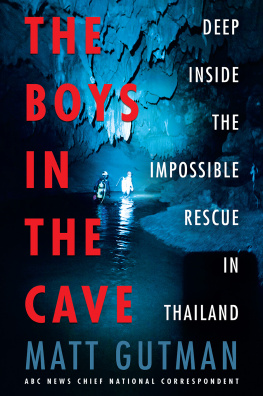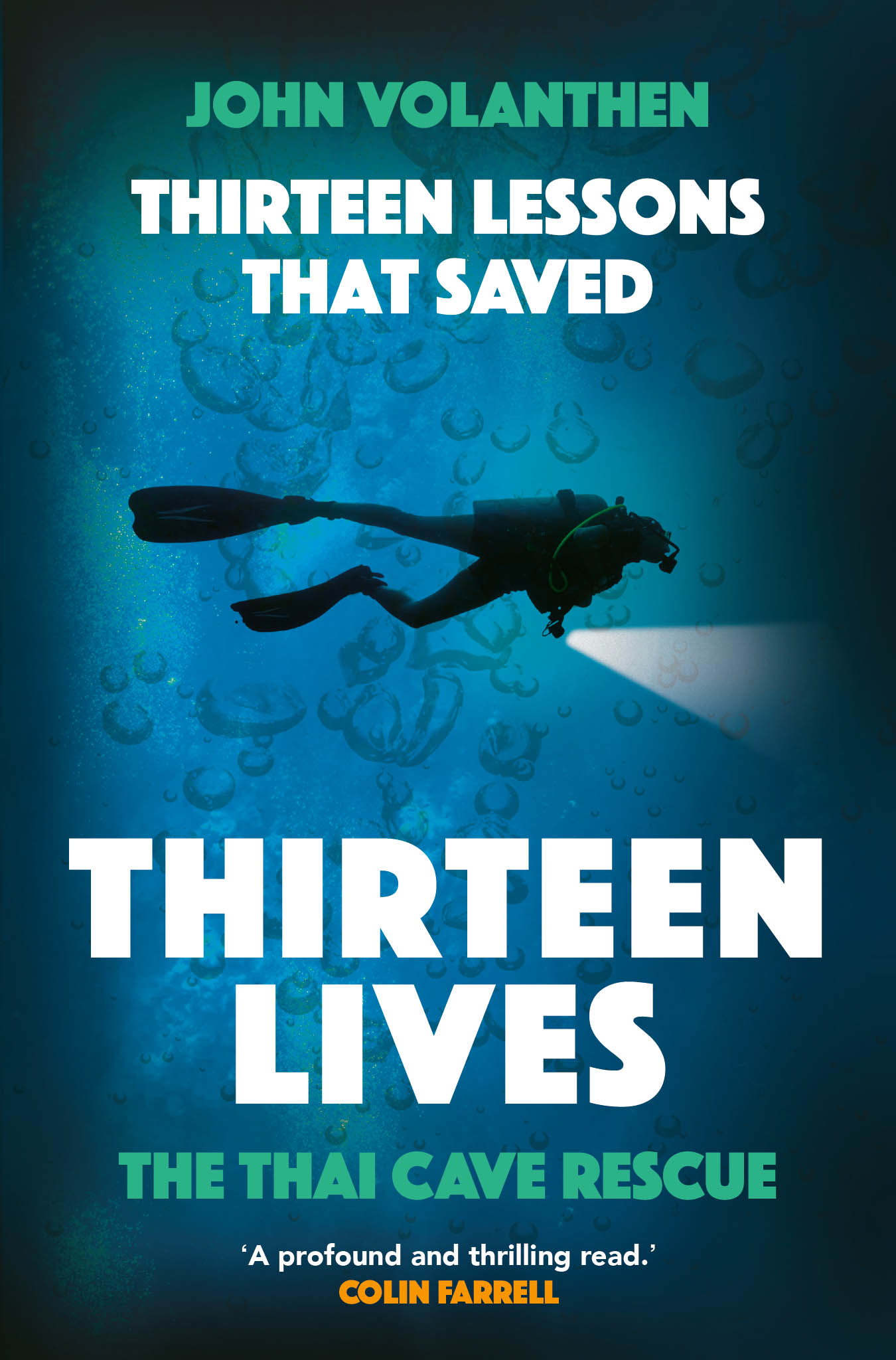Contents
Page List
Guide
Cover
THIRTEEN LESSONS THAT SAVED
THIRTEEN LIVES
THE THAI CAVE RESCUE
JOHN VOLANTHEN
With Matt Allen
CONTENTS
INTRODUCTION
They were alive.
I counted all thirteen faces with my flashlight as they peered back through the gloom. One: Titan. Two: Mix. Three: Dom. Four: Pong. Stuck inside a cave for nearly two weeks, unsurprisingly they looked tired and frightened. Five: Mark. Six: Tern. Seven: Biw. Eight: Adul. Nine: Note. Ten: Nick. T-shirts hung from their malnourished bodies as they shuffled towards us like ghouls: waving, pointing, almost disbelieving that anyone could have emerged from the chilly underground floodwaters that had trapped them for the best part of a fortnight. Eleven: Tee. Twelve: Night. And finally, number thirteen, the Wild Boars football team coach, Ek. This was a group of boys the world had already written off as dead. The football team stuck on a small bank in the belly of Tham Luang, a sidewinding labyrinth of caves positioned underneath the Doi Nang Non mountain range on the border between Thailand and Myanmar, and impenetrable to any rescue attempts until now.
Some of the kids shouted out.
Thank you, yelled a voice at the back.
Are we going out today? said another, waving into the inky darkness.
The smallest boy in the group slumped to the ground and sobbed silently. The poor kid looked distraught, which came as no great surprise given it was 2 July 2018 and the kids, aged between eleven and seventeen, plus twenty-five-year-old Ek, had first been reported missing on 23 June 2018. According to news reports, the date had been important. Night was celebrating his seventeenth birthday and the plan had been for an hour-long group excursion into the cave. For the Wild Boars, this was a big deal. Night had been the first of the team to reach such a milestone age; he was the oldest member in the group and the other boys looked up to him. Meanwhile, Ek, the responsible adult, had come along to guide everybody through the tunnels. The feeling was that all the boys within the team would be in safe hands.
The chances are, had anyone known that the previous days heavy storms were still filling the caves with floodwater, they would have warned the Wild Boars off such an excursion. Under those circumstances, crawling inside was incredibly risky because cave systems like Tham Luang held an unnerving reputation. On a bad day they could flood quickly, and with lethal results. What might have seemed like a fairly innocuous team adventure into the dark on a grey, but hot afternoon, a cool way to hang out after football training, very quickly twisted into a nightmarish ordeal as waves of churning water surged through the tunnels at high speed, transforming a series of interlinking caverns into watery tombs. Escaping on foot was suddenly unimaginable.
Claustrophobic, narrow cracks in the rock, and passages that had seemed like a tight squeeze on the way in had become sunken death traps. Every escape route was impossible to negotiate without underwater breathing apparatus, serious experience and a steady nerve, so there was certainly no way out for a bunch of kids with zero knowledge of cave diving. Climbing to higher ground inside the cavern in search of safety, the waters around them still rising, the Wild Boars had huddled together for warmth instead. Prayer was all they had left. The team would need rescuing, thats if anybody knew theyd entered the cave at all.
But they did. After twenty-four hours, the story of their disappearance started to creep across news feeds all over the world. Very soon, TV crews and journalists were flying to Thailand. Online, people were issuing their hopes, prayers and platitudes. And it was because of the news that I had decided to offer my services, having eventually figured out that given our experience and expertise in such high-pressure situations, my regular diving partner Rick Stanton and I were best placed to conduct a search and rescue mission. All my cave rescues had been unpaid. Rather than a career, I had always considered these operations as my contribution to what was a small community of divers. For work I ran my own IT business. In Thailand I was a volunteer.
But commitments of this kind had certainly led me on an interesting journey. Id been a cave diver for thirty-odd years, and alongside Rick I had set two records to do so. I decided that constructing one of my own was a vital next step; the alternative was to hang up my fins. I chose the former, and a strong partnership developed between the two of us.
Together, Rick and I had previously conducted a number of high-profile rescue operations, as well as volunteering to work in body recovery missions, a grizzly business, and as a result I had developed the skill set, confidence and knowhow to execute the job. But having arrived in Thailand and negotiated the political machinations surrounding what should have been a fairly straightforward humanitarian effort, and having spent several days attempting to find the stricken team, I had come to fear the worst. During dives I had to wriggle against murky, churning currents and through body-hugging cracks in the rock, my head torch unable to pierce the murky water. Tham Luang felt impenetrable.
Theres no chance those kids have survived, I thought after one particularly gruelling dive. Is there?
One night I even went so far as to mentally prepare myself for a hellish, endgame event. I visualised swimming into a tunnel choked with what looked like discarded plastic bags, ragged clothing and shoes, only to realise it was an underwater morgue. Mentally, the process, though morbid, steeled me for the grimmest of outcomes, but I wasnt the only one preparing for such a negative event. The Thai authorities had all but given up hope, too, and the mood within the divers Id been working alongside was just as doom-laden a group that included my diving partner Rick, Belgian cave diver Ben Reymenants, plus units from the Thai Navy SEALs, some members of the US military and a handful of Australian police divers. It was a widely shared view among us all that once the waters had retreated from Tham Luang, some of the group would be faced with the unenviable task of fishing a number of corpses from the muddy pools.
But wed been wrong. Those kids had made it.
In the end, when Rick and I had located the Wild Boars whereabouts, it had an unlikely feel to it. On 30 June, word filtered through to the rescue teams that our efforts had gone as far as they could, and so a colleague took us on a day trip around the mountain, even as the storm was still raging about us. I was quite happy for the distraction: we had been trapped by circumstance and bureaucracy, and the Thai government, keen not to create a PR disaster, wanted to hold all the foreign volunteer teams on site. Their fear was that a photo of the rescuers might be taken as they packed away equipment and tidied up their kit. That image would send an international message that thirteen lives had been lost and the authorities had been powerless to help.
Then everything changed. The weather calmed a little and the rapids that had once held us back from pushing deeper in to the Tham Luang tunnels began a slow retreat. We decided to make one more attempt at finding the Wild Boars. Supported by the American and Thai rescue teams in attendance, we spent two days swimming further into the caverns and fixing guidelines the kind of rope you might see used on a mountain expedition as a team of high-altitude climbers attack the summit of some inaccessible peak. Underwater in a cave, however, these ropes worked in two ways. The first was to serve as a route marker in the churning, sediment-heavy waters. The second was as a tool for forward momentum: by pulling on the line, a following diver could move more easily past stalactites and stalagmites, through rocky, body-hugging tubes and into vast pools with no immediate escape routes. If you havent guessed already, cave rescues are no task for the faint-hearted.


